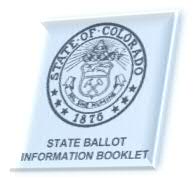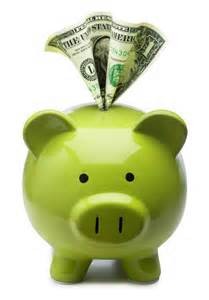By Sharon Eubanks
What’s up with the news reports saying the state has to refund state tax revenues collected on recreational marijuana? Didn’t voters already approve recreational marijuana and two new state taxes on recreational marijuana at two separate elections? It makes no sense that the state will have to refund tax revenues collected on recreational marijuana. Why are these refunds required? Well, here’s the scoop.
At the statewide election held in November of 2013, Proposition AA asked voters to approve imposing two new taxes on legalized recreational marijuana – a state excise tax and an additional state sales tax. Because this ballot question included tax increases, Article X, Section 20 of the Colorado Constitution (TABOR) required the state to include certain financial information in the Blue Book, which is the ballot information booklet that Legislative Council Staff prepares and provides to the public before an election.
TABOR requires the Blue Book to include “[f]or the first full fiscal year of each proposed district tax increase,  district estimates for the maximum dollar amount of each increase and of district fiscal year spending without the increase.” (TABOR Section 20 (3)(b)(iii).) To comply with these requirements, the 2013 Blue Book analysis for Proposition AA included the following estimates for fiscal year 2014-15:
district estimates for the maximum dollar amount of each increase and of district fiscal year spending without the increase.” (TABOR Section 20 (3)(b)(iii).) To comply with these requirements, the 2013 Blue Book analysis for Proposition AA included the following estimates for fiscal year 2014-15:
- State Spending Without the New Taxes — $12.08 billion
- State Revenue from the New Excise and Sales Taxes — $67 million
TABOR imposes consequences if the actual fiscal year spending and revenue amounts from an approved tax increase exceed the estimates provided to voters before the election. Specifically, TABOR Section 20 (3)(c) requires that, if either the resulting tax revenue or actual fiscal year spending exceeds the Blue Book estimates, then the voter-approved tax increase is reduced and the state must refund the revenues that exceed the estimates. The only way to avoid these impacts is “by later voter approval.” The General Assembly may obtain this later voter approval by referring a ballot question to prevent the tax rate reduction and to allow the state to keep all of its revenue.
If the recreational marijuana tax revenue in 2014-15 exceeds the Blue Book estimate of $67 million or if actual state fiscal year spending in 2014-15 exceeds the estimate of $12.08 billion, and the state has not obtained the later voter approval, then the state must:
- Reduce the rates of the recreational marijuana taxes; and
- Refund amounts that exceed the Blue Book estimates for fiscal year 2014-15 up to the total amount of the recreational marijuana tax revenues collected in that fiscal year.
Based on the Legislative Council Staff’s December 2014 Revenue Forecast, it is currently projected that the amount of recreational marijuana taxes collected in fiscal year 2014-15 will be $58.7 million, which is below the Blue Book estimate, and fiscal year spending for fiscal year 2014-15 will be $12.347.3 billion, which is above the Blue Book estimate. These estimates will likely change in subsequent revenue forecasts, but legislative staff expects that, by the end of fiscal year 2014-15, total recreational marijuana tax revenues will remain below the Blue Book estimate and actual fiscal year spending will still exceed the Blue Book estimate.
Blue Book estimate, and fiscal year spending for fiscal year 2014-15 will be $12.347.3 billion, which is above the Blue Book estimate. These estimates will likely change in subsequent revenue forecasts, but legislative staff expects that, by the end of fiscal year 2014-15, total recreational marijuana tax revenues will remain below the Blue Book estimate and actual fiscal year spending will still exceed the Blue Book estimate.
With total fiscal year spending for fiscal year 2014-15 likely to exceed the Blue Book estimate, the General Assembly may consider legislation during the 2015 session to:
- Refer a ballot question at the 2015 statewide election to prevent the recreational marijuana tax rate reductions and allow the state to keep all of its FY 2014-15 revenue above the Blue Book estimates; or
- Specify how to comply with TABOR in terms of how to reduce the rates of the recreational marijuana taxes, how to refund the marijuana tax revenues and to whom, and what revenues to use to accomplish this refund (e.g., recreational marijuana tax revenues or general fund revenues).
To date, a legislator has not introduced a bill dealing with these issues. But the 2015 session is only almost half over, so there is still time for the General Assembly to take up this issue. Stay tuned!






